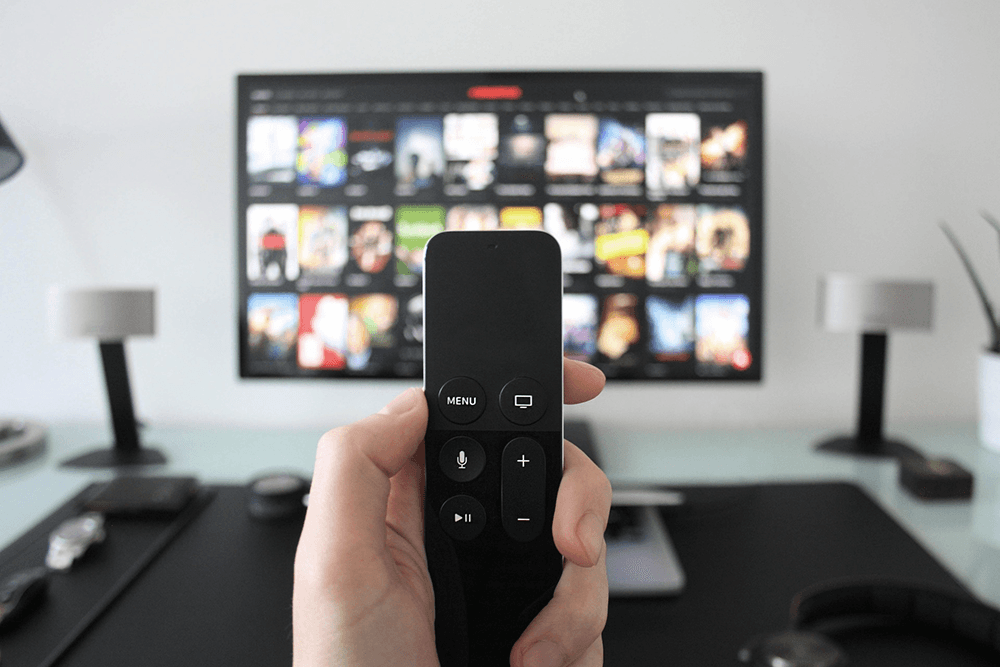
 Storage Tips
Storage TipsProperly Packing a Television for Long Term Storage
Televisions can be some of the most difficult items to put away in long term storage. Older CRT televisions are bulky and not sturdy, while newer LCD and LED models are wide and thin and can be challenging to pack in a standard box. Then, there's the fragile glass, which can be easily scratched, and interior electronic components, which can be damaged by humidity and extreme temperatures.
Rules for Properly Storing Your Television:
- Clean your television. Use a compressed air duster to get rid of dust in the crevices of the TV. Then, use a cleaner and soft dust cloth -- made of either microfiber or cotton -- to wipe down the TV. Always apply the cleaner to the cloth first, not to the TV directly.
- Remove the cables and TV stand (if your set came with the latter). Clean these pieces in the same manner you cleaned the television itself. Store the stand, cables, remote control, instruction manual, and any other pieces in a labeled box, separate from the TV.
- When possible, store the TV in the original box it came in.
- Remember: humidity and extreme temperatures should be avoided.
- Never store a TV on its back or on its screen; always place upright. Storing it on its back can severely damage its internal components. Storing a TV on its screen is also always ill-advised, as it puts pressure on the screen and can result in the screen breaking.
Below we provide a more comprehensive guide for properly prepping and storing your television:
How to Prepare Your Television for Storage
Thorough cleaning, particularly to remove dust, is critical to preparing your television for long term storage. Dust can be damaging inside your TV's air vents because it can ruin the interior electronic components. During the moving process, friction often occurs, and dust trapped between a material and the screen can result in small scratches diminishing the screen's quality. To clean the television, make sure to use a compressed air duster (normally used for computer keyboards) and a soft dust cloth.
Packing A TV for Storage
Ideally, you still have the original box the TV came with, along with its packaging, including protective covers and Styrofoam inserts. If you no longer have the box, a cost-effective solution to protect the screen is to use a thick comforter or blanket and then to use a bungee cord or rope to secure the device. However, make sure to avoid a blanket with hard parts, such as buttons or zippers, as these could damage the screen. A more expensive option for protecting the screen is a heavy-duty dust cover that's appropriately sized for your TV.
Then, slide the TV into the cardboard box. Consider using additional protection, such as Styrofoam peanuts or bubble or foam wrap. If you have a CRT TV, a standard box will be sufficient for storage. If, on the other hand, you have a thin LCD or LED TV, call your storage company ahead of time to find out if they offer boxes specifically designed for these televisions.
How to Pack a TV Without a Box?
Packing a TV without a box requires careful consideration to ensure its safety during transport. Start by covering the screen with a soft, protective material like a blanket or bubble wrap. Secure the covering with tape, ensuring it doesn't directly touch the screen. Then, wrap the entire TV with another layer of padding. Place the TV between two sturdy pieces of cardboard, securing them together with tape. Finally, use additional padding like blankets or cushions to create a protective barrier around the TV. Secure the padding in place and ensure the TV is immobilized in your vehicle to prevent movement during transport.
Is it Safe to Put a TV in Storage?
Yes, it's generally safe to store a TV as long as you take the necessary precautions. Ensure the TV is properly packed to prevent damage from shifting or impacts. Clean the TV thoroughly before storage and detach any removable components. Choose a climate-controlled storage unit to prevent extreme temperature and humidity fluctuations. Cover the TV with a cloth or plastic cover to protect it from dust. Position the TV upright, if possible, and avoid placing heavy items on top of it.
Can You Transport a TV Laying Down in the Box?
Transporting a TV lying down in the box is not recommended, especially for larger screens. If you must transport it horizontally, ensure the screen side is facing up to prevent pressure on the delicate components. However, it's generally safer to transport a TV upright to prevent stress on the screen and internal components.
What is the Temperature for Storing a TV?
The recommended temperature range for storing a TV is between 50°F (10°C) and 95°F (35°C). Extreme temperatures can damage electronic components and affect the TV's performance. It's best to choose a storage environment that maintains a consistent temperature within this range.
Can a TV Get Ruined in the Cold?
Yes, exposing a TV to extremely cold temperatures can cause damage. Cold temperatures can lead to condensation forming inside the TV, potentially damaging the internal components. Additionally, extreme cold can cause LCD and OLED screens to freeze, leading to permanent damage. It's essential to avoid storing or transporting a TV in freezing temperatures.
How Big of a Box do I Need?
The size of the box you need depends on the dimensions of your TV. Measure the width, height, and depth of the TV and choose a box that provides a few inches of extra space on all sides for padding. Make sure the box is sturdy and can fully encase the TV while allowing for proper padding to protect it during transportation or storage. Here are some general dimensions get you started.
- 50" TV - 50"x8"x32"
- 55" TV - 56"x8"x36"
- 65" TV - 60"x12"x37"
- 75" TV - 65"x14"x41"
- 80" TV - 70"x16"x42"
Choosing the Right Stroage Environment
When choosing a storage unit, you need to guard against the risks of humidity and extreme temperatures. Humidity results in moisture accumulating on the electronic components. Extreme cold can cause parts of your TV to get misshapen and warped. For these reasons, it is best to rent a climate-controlled unit.
Proper Television Storage
As we mentioned, you should always store a TV upright. Avoid storing it on its back or on its screen. In the storage unit itself, make sure that the TV has its own little space, apart from other items. Do not place items on top of the television, as this places pressure on the device. Finally, label the TV box on each side, reducing the risk that you will accidentally put something on top of the TV.
We're Your Storage Solution!
Storage Rentals of America is your convenient self-storage solution. So come into our office or give our storage experts a call at 1-800-457-5678. Our call center is available 7 days a week and can help determine which storage unit size best fits your storage needs.



